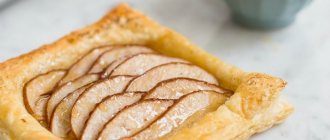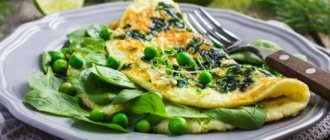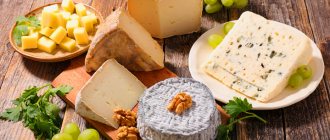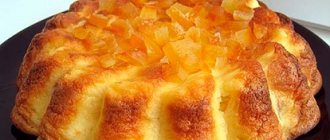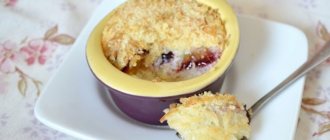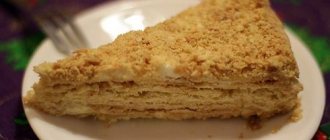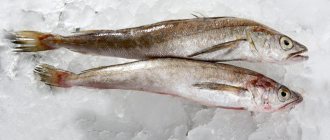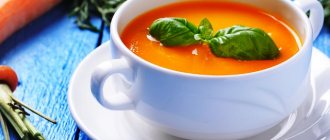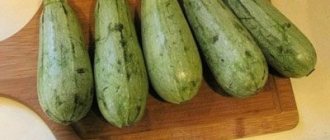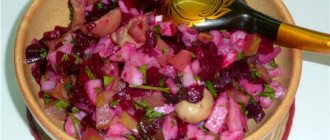List of low-fat cheeses: names, composition, method of preparation
There are 9 main low-calorie cheeses: Suluguni, Feta, Ricotta, Tofu, Brest-Litovsky Light, Roquefort, Fitness Cheese, Lakomo “Light”, dietary Ichalki.
They are approved for use during diets. Each product has a specific taste, smell, color, preparation method, and composition. These cheeses contain a large number of micro- and macroelements, such as magnesium, potassium, calcium, phosphorus, sodium, iron, zinc, selenium, and vitamins. WEIGHT LOSS STORIES OF STARS!
Irina Pegova shocked everyone with her weight loss recipe: “I lost 27 kg and continue to lose weight, I just brew it at night. » Read more >>
List of names of the lowest-fat varieties of cheese:
- 1. Suluguni.
- 2. Feta.
- 3. Ricotta.
- 4. Tofu.
- 5. Brest-Litovsk light.
- 6. Roquefort.
- 7. Fitness cheese.
- 8. Lakomo “Light”.
- 9. Dietary cheese Ichalki.
Brine traditional Georgian low-calorie cheese. Suluguni tastes moderately salty and has a dense, layered consistency. The color of the product is white, the presence of voids and irregularly shaped eyes is allowed. A crust does not form on the cheese. It has 5% fat content.
Includes:
- pasteurized cow's milk - 12 l;
- rennet starter - 1.4 mg.
Cooking method:
- 1. Milk is heated to 35 degrees, rennet is added, the product is fermented - a dense curd is obtained, which must be crushed into small pieces and pressed.
- 2. After this, the cheese is cut into ropes and melted on the stove at a temperature of 80 degrees, stirring until a homogeneous mass is formed.
- 3. The resulting mass is divided into equal pieces and formed by placing it in molds.
- 4. The molds with the product are placed in cold water for a few minutes, and then the cheese heads are taken out and kept in brine for several days until they are salted.
After salting, the cheese is ready for consumption.
100 g of product contains :
- water - 51 g;
- proteins - 18.5 g;
- fats - 23 g;
- carbohydrates - 3.0 g.
Calorie content per 100 g of product is 290 kcal.
Useful substances included:
The beneficial substances found in cheese help maintain the heart, bones and the entire body in a healthy state at any age. Since cheese is low in fat, it is recommended to be consumed during diets. Suluguni goes well with basil and cilantro, as well as in salads with fresh vegetables. Cheese is considered an excellent filling option for khachapuri; it is also fried with sesame seeds.
Feta is a traditional Greek cheese made from sheep or goat milk. The color is white or slightly creamy, the product has a cottage cheese smell and a dense consistency. Fat content - from 30 to 50 percent. Feta is one of the main ingredients in Greek salad. This product belongs to the group of pickled cheeses.
Includes:
- sheep or goat milk - 8 l;
- rennet - 1.5 mg.
Cooking method:
- 1. Milk must be boiled until foam appears, then cool it to room temperature.
- 2. Part of the milk should be poured into a clean glass and pour the package of dry starter into it.
- 3. Stir the starter with a spoon and pour the mixture into the main one.
- 4. Fermented milk must be sent to a warm place for 7 hours.
- 5. When the whey has separated, you need to line the bottom of a colander with gauze and pass the mixture through it.
- 6. Next, gather the edges of the fabric and tie them into a knot to make a bag. It must be hung on a tap or nail to allow liquid to drain. This will take about half an hour.
- 7. The curdled mass is placed in a colander, which is placed in a bowl and pressed down with pressure. The mass should remain in this position for 2 hours.
- 8. The whey is drained and mixed with salt.
- 9. The whey is poured with hot water and a bag of cheese is lowered into it.
- 10. You need to leave the product for 2 hours.
Feta should be kept in brine - this will significantly increase its shelf life.
100 g of product contains :
- water - 55 g;
- fats - 21.3 g;
- proteins - 14.3 g;
- saturated fatty acids - 15 g;
- ash - 5.1 g;
- carbohydrates - 4.08.
Calorie content - 265 kcal per 100 g.
The product is rich in:
- vitamins B5, B6, B12, A, C, E;
- calcium;
- iron;
- zinc;
- phosphorus;
- manganese;
- sodium
Dietary cheese Ichalki
There are 9 main low-calorie cheeses: Suluguni, Feta, Ricotta, Tofu, Brest-Litovsky Light, Roquefort, Fitness Cheese, Lakomo “Light”, dietary Ichalki.
They are approved for use during diets. Each product has a specific taste, smell, color, preparation method, and composition.
These cheeses contain a large number of micro- and macroelements, such as magnesium, potassium, calcium, phosphorus, sodium, iron, zinc, selenium, and vitamins.
WEIGHT LOSS STORIES OF STARS!
Irina Pegova shocked everyone with her weight loss recipe: “I lost 27 kg and continue to lose weight, I just brew it at night. » Read more >>
List of names of the lowest-fat varieties of cheese:
- 1. Suluguni.
- 2. Feta.
- 3. Ricotta.
- 4. Tofu.
- 5. Brest-Litovsk light.
- 6. Roquefort.
- 7. Fitness cheese.
- 8. Lakomo “Light”.
- 9. Dietary cheese Ichalki.
Brine traditional Georgian low-calorie cheese. Suluguni tastes moderately salty and has a dense, layered consistency. The color of the product is white, the presence of voids and irregularly shaped eyes is allowed. A crust does not form on the cheese. It has 5% fat content.
Includes:
- pasteurized cow's milk - 12 l;
- rennet starter - 1.4 mg.
Cooking method:
- 1. Milk is heated to 35 degrees, rennet is added, the product is fermented - a dense curd is obtained, which must be crushed into small pieces and pressed.
- 2. After this, the cheese is cut into ropes and melted on the stove at a temperature of 80 degrees, stirring until a homogeneous mass is formed.
- 3. The resulting mass is divided into equal pieces and formed by placing it in molds.
- 4. The molds with the product are placed in cold water for a few minutes, and then the cheese heads are taken out and kept in brine for several days until they are salted.
After salting, the cheese is ready for consumption.
100 g of product contains :
- water - 51 g;
- proteins - 18.5 g;
- fats - 23 g;
- carbohydrates - 3.0 g.
Calorie content per 100 g of product is 290 kcal.
Useful substances included:
The beneficial substances found in cheese help maintain the heart, bones and the entire body in a healthy state at any age. Since cheese is low in fat, it is recommended to be consumed during diets. Suluguni goes well with basil and cilantro, as well as in salads with fresh vegetables. Cheese is considered an excellent filling option for khachapuri; it is also fried with sesame seeds.
Feta is a traditional Greek cheese made from sheep or goat milk. The color is white or slightly creamy, the product has a cottage cheese smell and a dense consistency. Fat content - from 30 to 50 percent. Feta is one of the main ingredients in Greek salad. This product belongs to the group of pickled cheeses.
Includes:
- sheep or goat milk - 8 l;
- rennet - 1.5 mg.
Cooking method:
- 1. Milk must be boiled until foam appears, then cool it to room temperature.
- 2. Part of the milk should be poured into a clean glass and pour the package of dry starter into it.
- 3. Stir the starter with a spoon and pour the mixture into the main one.
- 4. Fermented milk must be sent to a warm place for 7 hours.
- 5. When the whey has separated, you need to line the bottom of a colander with gauze and pass the mixture through it.
- 6. Next, gather the edges of the fabric and tie them into a knot to make a bag. It must be hung on a tap or nail to allow liquid to drain. This will take about half an hour.
- 7. The curdled mass is placed in a colander, which is placed in a bowl and pressed down with pressure. The mass should remain in this position for 2 hours.
- 8. The whey is drained and mixed with salt.
- 9. The whey is poured with hot water and a bag of cheese is lowered into it.
- 10. You need to leave the product for 2 hours.
Feta should be kept in brine - this will significantly increase its shelf life.
100 g of product contains :
- water - 55 g;
- fats - 21.3 g;
- proteins - 14.3 g;
- saturated fatty acids - 15 g;
- ash - 5.1 g;
- carbohydrates - 4.08.
Characteristics
- Name: Dietary
- Type: Cheese
- Fat content: 27%
- Energy value: 164 kcal
- Ingredients: normalized milk, mesophilic lactic acid microorganisms, animal rennet NATUREN, table salt.
- Shape: lump
- By color: yellow
This page presents the product of the Hard Cheese category “Ichalki Dietary Lump Cheese, 1000 g”. The list of parameters is given in the “Characteristics” section in the “General” and others field.
You can order this product and quickly find a seller at the best price for you.
Fill out the quick application form
If you want to leave a request to purchase a product, click on the “quick order” button and fill out the form.
All sellers will instantly receive notification of your order
Next, all sellers of this product will receive a notification about your order. We use all available means of communication to ensure reliable delivery of your application.
Sellers will make calculations and offer their prices
Sellers will prepare optimal offers for your application, taking into account current promotions and discounts. Sometimes sellers do not indicate the price, or it becomes irrelevant due to rapidly changing external factors.
You can choose the best option from those offered
Based on reviews and ratings, as well as the offered price, it will be easier for you to choose one or another seller. Low price is not always the decisive factor in choosing a seller.
average price
The average price for goods in the city of Moscow (699 rubles) is based on data on the cost at different points of sale. The “Price Change Graph” field reflects the increase and decrease in the average cost of goods day by day over the course of the month.
Sellers prices
If you are the owner of one or more companies registered on the portal, by clicking on the “I am selling this product” button, you can leave information about your business in the “Where to buy” tab. To place your data in the “Seller Prices” tab, click the “Set Price” button.
Buyer prices
If you know the price of this product, you can specify it by clicking the “Change price” button, then the price will be displayed in the “Customer prices” tab. Here you can see at what price different companies sold this product to other buyers.
Where can I buy
If you were looking for where you can inexpensively buy “Ichalki Dietary Lump Cheese, 1000 g” in Moscow, see the addresses and other information about places of sale in the “Where to Buy” tab. Shown are coordinates from both sellers and buyers who added information through the form from the Buyers' Prices section.
Compare products
If you want to compare two products in the Hard Cheese category, click on the “Add to comparison” button on the pages of interest. Click on the pop-up window and you will be taken to the comparison form.
View product reviews
Your opinion is important to us. If you wish, you can share your experience and write a review about “Ichalki Dietary Lump Cheese, 1000 g” by clicking on the “Leave a review” link in the field next to the rating or find out what other users write in the “Reviews” section. On the same page you can participate in creating a product rating using a five-point system. The average user rating is displayed as stars to the right of the product photo.
Ask questions
Due to the fact that almost all sellers of this product are represented on our portal, you have the opportunity to receive the most competent answers to your questions. By answering customer questions, the seller not only advertises his goods, but also gains internal rating points on our portal.
Discussions
If you want all users, and not just sellers, to discuss certain points regarding this product, then you can Add a comment
Share with friends
You also have the opportunity to share a link to the product on social networks. To do this, click on the icon of the desired site to the right of the photo at the top of the page or below this text.
List of low-fat and low-calorie cheeses
List of names of the lowest-fat varieties of cheese:
- 1. Suluguni.
- 2. Feta.
- 3. Ricotta.
- 4. Tofu.
- 5. Brest-Litovsk light.
- 6. Roquefort.
- 7. Fitness cheese.
- 8. Lakomo “Light”.
- 9. Dietary cheese Ichalki.
Adyghe cheese - composition and KBJU, beneficial properties, recipe
Suluguni
Brine traditional Georgian low-calorie cheese. Suluguni tastes moderately salty and has a dense, layered consistency. The color of the product is white, the presence of voids and irregularly shaped eyes is allowed. A crust does not form on the cheese. It has 5% fat content.
Includes:
- pasteurized cow's milk - 12 l;
- rennet starter - 1.4 mg.
Cooking method:
- 1. Milk is heated to 35 degrees, rennet is added, the product is fermented - a dense curd is obtained, which must be crushed into small pieces and pressed.
- 2. After this, the cheese is cut into ropes and melted on the stove at a temperature of 80 degrees, stirring until a homogeneous mass is formed.
- 3. The resulting mass is divided into equal pieces and formed by placing it in molds.
- 4. The molds with the product are placed in cold water for a few minutes, and then the cheese heads are taken out and kept in brine for several days until they are salted.
After salting, the cheese is ready for consumption.
100 g of product
contains :
- water - 51 g;
- proteins - 18.5 g;
- fats - 23 g;
- carbohydrates - 3.0 g.
Calorie content per 100 g of product is 290 kcal.
Useful substances included:
- vitamins A, E, C, B1, PP;
- potassium;
- sodium;
- iron.
The beneficial substances found in cheese help maintain the heart, bones and the entire body in a healthy state at any age. Since cheese is low in fat, it is recommended to be consumed during diets. Suluguni goes well with basil and cilantro, as well as in salads with fresh vegetables. Cheese is considered an excellent filling option for khachapuri; it is also fried with sesame seeds.
Feta
Feta is a traditional Greek cheese made from sheep or goat milk. The color is white or slightly creamy, the product has a cottage cheese smell and a dense consistency. Fat content - from 30 to 50 percent. Feta is one of the main ingredients in Greek salad. This product belongs to the group of pickled cheeses.
Includes:
- sheep or goat milk - 8 l;
- rennet - 1.5 mg.
Cooking method:
- 1. Milk must be boiled until foam appears, then cool it to room temperature.
- 2. Part of the milk should be poured into a clean glass and pour the package of dry starter into it.
- 3. Stir the starter with a spoon and pour the mixture into the main one.
- 4. Fermented milk must be sent to a warm place for 7 hours.
- 5. When the whey has separated, you need to line the bottom of a colander with gauze and pass the mixture through it.
- 6. Next, gather the edges of the fabric and tie them into a knot to make a bag. It must be hung on a tap or nail to allow liquid to drain. This will take about half an hour.
- 7. The curdled mass is placed in a colander, which is placed in a bowl and pressed down with pressure. The mass should remain in this position for 2 hours.
- 8. The whey is drained and mixed with salt.
- 9. The whey is poured with hot water and a bag of cheese is lowered into it.
- 10. You need to leave the product for 2 hours.
Feta should be kept in brine - this will significantly increase its shelf life.
100 g of product
contains :
- water - 55 g;
- fats - 21.3 g;
- proteins - 14.3 g;
- saturated fatty acids - 15 g;
- ash - 5.1 g;
- carbohydrates - 4.08.
Calorie content - 265 kcal per 100 g.
The product
is rich in:
- vitamins B5, B6, B12, A, C, E;
- calcium;
- iron;
- zinc;
- phosphorus;
- manganese;
- sodium
Cheese consumption is indicated for people with obesity, heart disease and diabetes, osteoporosis, the product strengthens bones and teeth. Cheese is combined with fresh vegetables and toasted bread, as well as pears.
Ayran - composition, benefits and harms, methods of preparation at home
Ricotta
Ricotta is a traditional Italian whey cheese. It is made from the whey left over from the preparation of other cheeses. The sweetish taste of ricotta and its fat content depend on the milk used in its production. Up to 10% fat content comes from cow's milk, up to 20% from sheep's milk. There are various varieties of ricotta that differ in taste and composition.
Compound:
- whey from cow's or sheep's milk - 5 l;
- citric acid - 0.5 tsp;
- water - 50 g.
Cooking method:
- 1. It is necessary to heat the serum to 90 degrees.
- 2. Dilute citric acid in 50 g of water.
- 3. Mix the ingredients.
- 4. The resulting cheese flakes must be strained using cheesecloth.
Ricotta is a dietary product that is not intended for long-term storage. Harder cheese can be stored for about 1 week.
The cheese
contains:
- proteins - 11.3 g;
- fats - 13 g;
- carbohydrates - 3.05 g.
Calorie content is 160 kcal per 100 g.
Micro- and macroelements in ricotta cheese are presented:
- vitamins of group A, B6, B12, D, C;
- calcium;
- phosphorus;
- magnesium;
- selenium
Cheese is useful for hypertension, problems with the gastrointestinal tract, and high cholesterol. Has a beneficial effect on the nervous system and visual acuity. Recommended for children and elderly people to strengthen bones and teeth. Cakes and cannoli are made with ricotta; the cheese is used in hot dishes and in the baking of Pastiera Easter bread.
Tofu
Tofu is a low-fat white soy cheese. Has a neutral taste.
There are the following types
of tofu:
- silk;
- solid;
- pressed;
- smoked;
- dried.
Soy cheese contains a lot of protein and calcium. The amount of protein exceeds that found in foods such as beef and eggs.
The cheese contains:
- soy milk - 1 l;
- juice of 1 lemon.
Cooking method:
- 1. Heat the soy milk to a boil and leave it on the stove for 7 minutes.
- 2. Add lemon juice to the milk.
- 3. In order for the mass to curl well, you need to stir it thoroughly.
- 4. It is necessary to squeeze out the moisture from the resulting product.
- 5. Place the mass under the press.
In the refrigerator, the cheese must be kept in water and stored for no more than 7 days.
- proteins - 8.05 g;
- fats - 4.8 g;
- carbohydrates - 1.89 g.
Calorie content is 72 kcal per 100 g.
Micro- and macroelements of cheese are presented:
- vitamins E, B12, B6, D;
- calcium;
- phosphorus;
- iron;
- zinc
Due to its low fat content, tofu is a good choice for obese people in their diet. It has the property of removing dioxin from the body, which has a cumulative effect and can contribute to the formation of cancer. Cheese contains phytoestrogens, which have a good effect on women's health during menopause and hormonal imbalances. Tofu can be combined with many ingredients; it can be baked, fried, boiled, stewed, and also added to salads and desserts.
Brest-Litovsk light
Brest-Litovsky light cheese has a pleasant cheesy smell and creamy taste. Its color is light yellow.
Compound
:
- pasteurized cow's milk - 4 l;
- starter based on lactic acid mesophilic and thermophilic bacteria - 1.5 mg;
- table salt - 1 tbsp. l.
Cooking method
:
- 1. A starter of lactic acid thermophilic and mesophilic bacteria is added to warm milk, and fermentation occurs.
- 2. When ripening, a grain of cheese is obtained, which is mixed well and pressed for 30 minutes.
- 3. The cheese layer is cut and shaped, then placed under more pressure.
- 4. The cheese is placed in the salting department, dried, packaged and placed to ripen.
Natural food coloring “annatto” is added to the product.
100 g of product
contains:
- proteins -3 1.3 g;
- fats - 18.1 g;
- carbohydrates - 0 g.
The calorie content of cheese is 288 kcal.
Cheese contains the following beneficial substances:
- vitamins A, B6, B12, D, PP;
- potassium;
- calcium;
- phosphorus.
You can consume the product by combining it with bread in the form of a sandwich, adding it to salads and cold appetizers, and using it for baking. This cheese is perfect for people with problems of the cardiovascular system, for strengthening bone tissue, and for obesity.
Roquefort
Roquefort is made from sheep's milk in France. The ripening of the cheese takes place in limestone grottoes so that mold of the Penicillium Roqueforti species forms inside the product, giving it a characteristic smell and taste. The top of the cheese is covered with a white, moist crust. The consistency of the cheese is oily with blue mold, forming small cavities. It has a hazelnut flavor.
Compound:
- sheep milk - 8 l;
- water - 50 ml;
- calcium chloride - 1/4 tsp;
- Penicillium roqueforti mold - 1/16 tsp;
- rennet - 1/4 tsp.
Cooking method
:
- 1. Heat sheep's milk to 30 degrees.
- 2. To prepare the starter, place 100 ml of milk in a separate bowl and add mold to it. Add half of the mass to milk.
- 3. Scatter the starter over the surface of the milk and stir with a slotted spoon after 2 minutes.
- 4. Dissolve rennet and calcium chloride in 50 ml of cold water. Add to the main mass. Cover with a lid and place in a warm place for an hour.
- 5. Cut the resulting clot into cubes.
- 6. Place the cheese cubes in special molds and drain the liquid from them every 3 hours.
- 7. After the cheese has dried, it must be pricked with sourdough using a medical syringe.
The product
contains:
- proteins - 22 g;
- fats - 27.75 g;
- carbohydrates - 2.35 g.
Calorie content is 355 kcal.
The product contains such useful substances as:
- vitamins PP, B3, B12, E, K;
- potassium;
- calcium;
- phosphorus;
- copper;
- selenium;
- zinc;
- choline
It is recommended to eat 30 g of cheese per day. Penicillin in its composition helps to normalize intestinal function and improves its microflora and digestion. Roquefort is considered a good appetizer for dry and semi-sweet dishes. Blue cheese goes well with fruit and bread.
Fitness cheese
Cheese is included in the group of low-fat products - from 15 to 25 percent. The taste is fruity and nutty, the color is yellowish. Cheese with a low salt content.
Includes:
- pasteurized normalized cow's milk - 3 l;
- bacterial starter – 1.5 mg;
- table salt - 1 tsp;
- lysozyme - 1.2 mg.
Cooking method:
- 1. Milk is heated to the desired temperature, a bacterial starter is added and fermented.
- 2. Separate the curd mass from the whey, add salt and lysozyme.
- 3. Spread the mass into molds, press and set for ripening.
100 g of product
contains :
- proteins - 28 g;
- fat - 10 g;
- carbohydrates - 0 g.
Calorie content is 224 kcal per 100 g.
The composition
of the product is presented:
- vitamins A, B1, C, D, E, K, PP;
- zinc;
- selenium;
- iron;
- phosphorus.
Cheese is used for dietary nutrition, as well as for making pizza, sandwiches and sauces.
Lakomo Light
Light cheese is a low-calorie product. Made from cow's milk. It has the color of baked milk and is packaged in sealed packaging in the form of slices.
Compound:
- normalized pasteurized cow's milk - 4 l;
- bactericidal starter culture of mesophilic lactic acid bacteria - 1.6 mg;
- table salt - 1.5 tsp;
- calcium chloride - 1/14 tsp;
- lysozyme - 1/16 tsp.
Cooking method
:
- 1. A bacterial starter is added to the milk and fermentation occurs.
- 2. The cheese mass is heated to a temperature of 32-42 degrees, calcium chloride, salt and lysozyme are added.
- 3. Then the cheese is pressed and ripened.
100 g of product
contains:
- proteins - 32 g;
- fats - 11 g;
- carbohydrates - 0 g.
Calorie content - 202 kcal.
The product contains:
- vitamins;
- calcium;
- iron;
- phosphorus;
- selenium;
- zinc.
Dietary Ichalki
Dietary cheese is a low-fat, semi-hard, light variety. The product is light yellow in color, with a delicate creamy taste and elastic consistency.
Compound:
- pasteurized milk with the addition of mesophilic lactic acid bacteria - 700 ml;
- greens - a bunch;
- soda - 1 tbsp. l.;
- eggs - 3 pcs.;
- rennet NATUREN - 1.2 pcs.
Cooking method
:
- 1. It is necessary to grind natural cottage cheese using a sieve or blender.
- 2. Place the resulting mass in a saucepan and add milk, put on low heat. The mixture must be stirred constantly.
- 3. After the mixture begins to boil, whey will appear. To make it drain, you should line a colander with gauze and wait until the liquid separates.
- 4. Beat 2 eggs with soda, herbs and salt. Add 1 egg to the mixture without whey and mash everything thoroughly so that no lumps of cottage cheese remain.
- 5. The cheese mixture is placed in a pan with thick walls, then it needs to be melted. It will become plastic.
- 6. The mass is placed in cling film and given the desired shape.
- 7. Next, put the cheese in the refrigerator.
The beneficial substances included in the product are:
- vitamins B6, B12, D, H, PP;
- magnesium;
- potassium
Should be stored open in the refrigerator for no more than 7 days. The dietary product is suitable for preparing cold appetizers, salads, and used for baking.
- 1. Peel the zucchini and cut into small cubes, add finely chopped garlic and some lemon juice, add salt and leave to marinate.
- 2. Cut the tomatoes into halves and add chopped basil to them.
- 3. Chop shallots into rings, cucumber halves, and bell peppers into small strips.
- 4. Place all the vegetables in a salad bowl, season with the remaining lemon juice, and mix.
- 5. Cut the feta cheese into cubes, cut the olives in half and add to the salad bowl with the vegetables, season with olive oil and salt.
- 6. The finished salad can be decorated with fresh basil leaves.
Salad with suluguni cheese, chicken and croutons
Ingredients presented:
- smoked suluguni - 200 g;
- chicken breast - 300 g;
- eggs - 4 pcs.;
- canned corn - 1 can;
- crackers - 1 pack;
- mayonnaise - to taste.
Cooking diagram:
- 1. Boil the chicken breast in salted water and cut into oblong pieces.
- 2. Divide the suluguni cheese (in the form of a braid) into fibers.
- 3. Boil the eggs, cool and cut into cubes.
- 4. Drain the liquid from the corn and place in a salad bowl.
- 5. Mix all ingredients in a deep salad bowl, season with mayonnaise and salt.
- 6. Before serving, sprinkle the salad with croutons and herbs.
Dietary cheese: varieties, calorie content and recipes for diet
People who care about their figure usually choose all products with the lowest fat content possible. What can I say, this is the right strategy. Eat less sweets, flour products, fatty foods and add exercise - slimness will quickly appear on the horizon.
Cheese is considered a rather fatty product. Of course, it is rich in useful minerals and vitamins; There is much more protein in cheese than even in meat. In fact, cheese is considered a milk concentrate, containing 20-25% protein. For comparison: milk contains only 3.2% protein. However, in dietary nutrition, cheese consumption is severely limited or completely eliminated.
It is not necessary to do this; there is no need to deprive the body of such a useful and easily digestible product and risk your health. After all, there are low-fat and low-fat varieties of cheese; they can be an excellent alternative for a diet that limits the consumption of fatty foods.
Most of the cheeses we are familiar with have a fat content of about 50-70% (in other words, for every 100 g of product there is 50-70 g of fat). If you want to stay slim, then you should give preference to dietary cheeses with specially reduced fat content (within 20-30%). This is the product that is considered light.
There is also low-fat cheese (up to 20%). The cream is first and carefully removed from any milk, and only then is dietary cheese created. Similar products can be found in hypermarkets or specialized expensive stores. There is no doubt that this is the best option for losing weight, an ideal alternative for people trying to maintain weight.
By the way, nutritionists have long ago developed a special cheese diet, where the basis of the diet (2/3) is different types of cheese with a fat content of up to 35%. In 10 days of eating this way, you can actually lose 5 kg or more of excess weight. The emphasis is on tofu, feta cheese, goudette, ricotta, chechil, cottage cheese and other healthy cheeses with a variety of flavors, which we will discuss below. Some of them can be easily prepared by yourself at home.
Dietary cheese "Ichalki"
Finding delicious low-calorie cheese is not the easiest task. Often, such a product will have a bland taste and a not very pleasant consistency.
It is suitable for those people who watch their figure. A distinctive feature of this cheese is its low fat content. In one hundred grams of dry matter, the mass fraction of fat is twenty-seven percent. Cheese retains a large amount of protein and calcium, which benefits not only your figure, but also your health. The cheese has a light milky taste and smell. It belongs to the category of semi-solid - elastic and delicate in consistency. This cheese is made from natural cow's milk, without the use of artificial additives or plant components. Storage conditions: temperature should be from zero to six degrees, and air humidity - from eighty to eighty-five percent inclusive. The shelf life of dietary cheese “Ichalki” is two hundred and forty days. The product is packaged in packages of 1.3 - 1.5 kilograms.
The price varies from six hundred twenty to seven hundred fifty rubles per kg, depending on the region and the pricing policy of the store.
The best low-fat cheeses
Sometimes low-fat cheeses need to be consumed not only to maintain a thin waist, but also for health reasons. Thus, therapeutic diet No. 5, used for diseases of the gallbladder and liver, also involves restriction in fatty foods (maximum 90 g of fat per day), and therefore there is a switch to low-fat cheeses in the diet. Ricotta and Adyghe cheese are perfect.
Here is a list of the most famous dietary cheeses.
This cheese is made from soy milk and is considered curd cheese. Most of all it resembles feta cheese, but unsalted. It is impossible not to note the highest content of high-quality protein; tofu can replace meat and eggs in this regard. Calorie content – up to 90 kcal. Nutritionists note the healing properties of tofu, because this cheese helps lower “bad” cholesterol and prevents vascular diseases, osteoporosis, heart problems, etc.
Tofu contains phytoestrogens, so it is an ideal dish for women with hormonal imbalances, during menopause, etc. The only “but”: tofu can contribute to excessive gas formation.
Important: this cheese can be kept in the refrigerator for up to a week, be sure to store it in an aqueous solution.
Ricotta (2-24%)
True, this is not cheese, at least in our usual understanding, but rather cottage cheese. The consistency is like sandwich paste. Manufacturers often add sugar, even dried fruits, to ricotta, turning the dietary product into a curd mass. Therefore, it is important to ensure that the cheese is without these additives.
It is created from the leftover whey from other cheeses. Ricotta does not contain the usual milk proteins, there is only albumin protein, which is present in the human blood (the reason why the absorption of ricotta occurs many times faster and easier). Its calorie content is a maximum of 172 kcal.
Product reviews
Mostly they are positive. Buyers note a delicate, but at the same time rich taste, which is rarely found in dietary cheeses, and a pleasant consistency. Also an advantage for consumers is the natural composition. Of course, both low fat content and low calorie content are assessed as a positive characteristic. Cheese is consumed mainly in sandwiches (including hot ones), added to salads and made into snacks from pita bread with garlic.
Ichalki cheese is a good find for those who love to eat delicious food, but at the same time watch their figure.
Source
